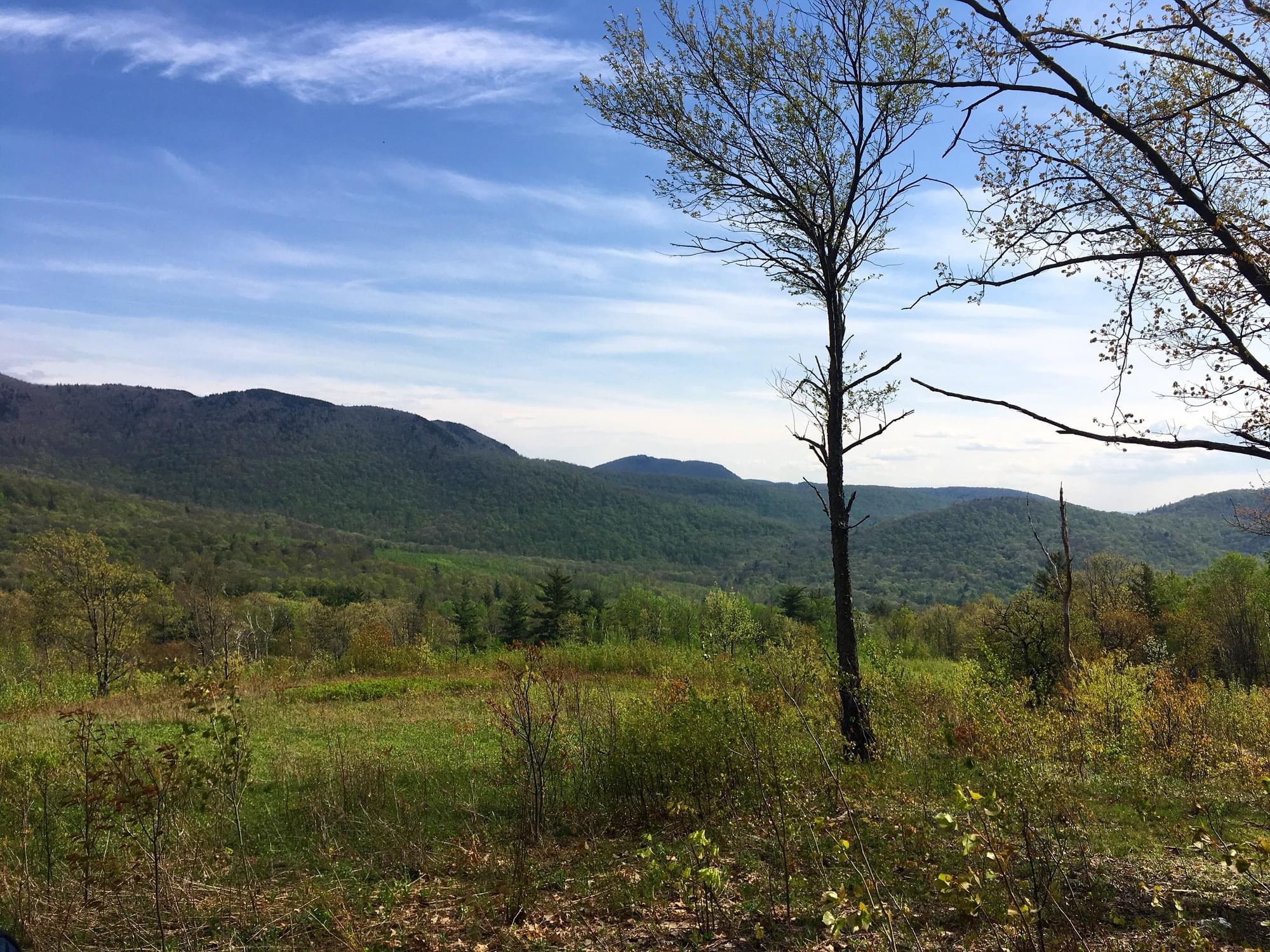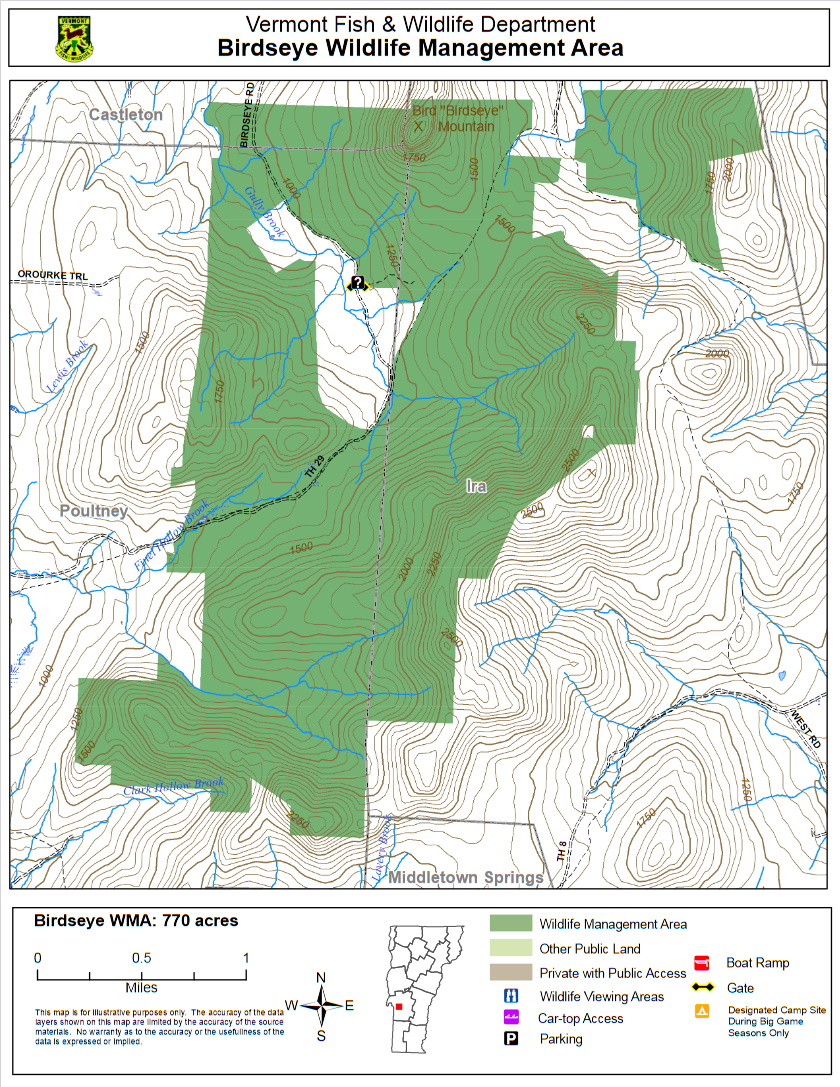Birdseye WMA

Tips for Birding
Birdseye Wildlife Management Area has the towering cliffs on this Hershey kiss-shaped hunk of rock that are home to the world’s fastest bird. During peregrine falcon nesting season, the nests can best be seen from the shrubby meadows on the south side of the mountain. Outside the peregrine nesting season, a well-worn “goat” path takes brave souls up the rocky slopes of the cliff face. Peregrine falcons are the star of the show here, but there are also opportunities to see and hear warblers, grouse, turkeys, thrushes, and sparrows.
Birds of Interest
The peregrine falcon, which is featured on the state’s conservation license plate, is the fastest bird in the world and is capable of diving in excess of 200 miles per hour. These amazing birds were known to have nested previously on the steep rocky ledges of Birdseye Mountain. The historic nesting was one reason for the department’s purchase of this parcel. The peregrine falcon population crashed in the 1960s and the last known sighting of a wild adult peregrine at a northeastern nesting site occurred in Vermont in 1970. The peregrine population was entirely wiped out in Vermont and throughout the Northeast. Their demise was due to the effects of the pesticide DDT, which thinned eggshells to the point of breaking under the weight of the parents. The peregrine falcon was listed as both a state and federal endangered species.
DDT was banned in 1972. With that and the help of an intense captive breeding program, peregrine falcons have made a dramatic recovery. The Vermont Fish and Wildlife Department, in cooperation with the Peregrine Fund and the Vermont Institute of Natural Science, released 93 young birds between 1982-87. By 1989, Birdseye Mountain once again had peregrine falcons nesting on its rocky ledges. The state’s population has steadily increased, and in 2002 reached a high of 30 breeding pairs. They were removed from the federal endangered species list in 1999 and the state endangered species list in 2005.
The relatively diverse habitats on the parcel provide opportunities to encounter numerous other species of birds. The abundance of early successional habitat preferred by ruffed grouse and woodcock accounts for their relatively high numbers. Turkeys are often found on Birdseye WMA, which is in the heart of the prime turkey range. Hiking through the various habitats provides opportunities for the bird watcher to encounter numerous songbird species.
About this Location
Birdseye Wildlife Management Area (WMA) is 3,640 acres of land owned by the State of Vermont and managed by the Vermont Fish and Wildlife Department. The WMA is located approximately six miles west of the city of Rutland. It lies within the towns of Ira, Castleton, and Poultney. Birdseye Road and Finel Hollow Road offer pull-offs for parking.
Birdseye WMA is situated within the Western Foothills physiographic region, which has one of the mildest climates in the state. The topography of the parcel ranges from fairly level former pasture and farmland to the steep talus slopes of Birdseye Mountain. The mountain overlooks a mix of hardwoods that include red and sugar maple, yellow and paper birch, beech, and aspen that covers about 70% of the WMA. The remainder is comprised of white pines and remnant fields. One major watercourse, Gulley Brook, drains the WMA with several smaller feeder streams traversing the parcel. The brook has great aesthetic value and is worth the short hike to see it.
Birdseye Wildlife Management Area was formerly named Bird Mountain Wildlife Management Area.
Notable Trails
The AllTrails website has a map and description of a hike at Birdseye Mountain Wildlife Management Area.
Features
Restrooms on site
Wheelchair accessible trail
Entrance fee
Content from Vermont’s Best Birding Hotspots by Vermont Agency of Natural Resources and Bird Mountain guide and map
Last updated December 3, 2023
